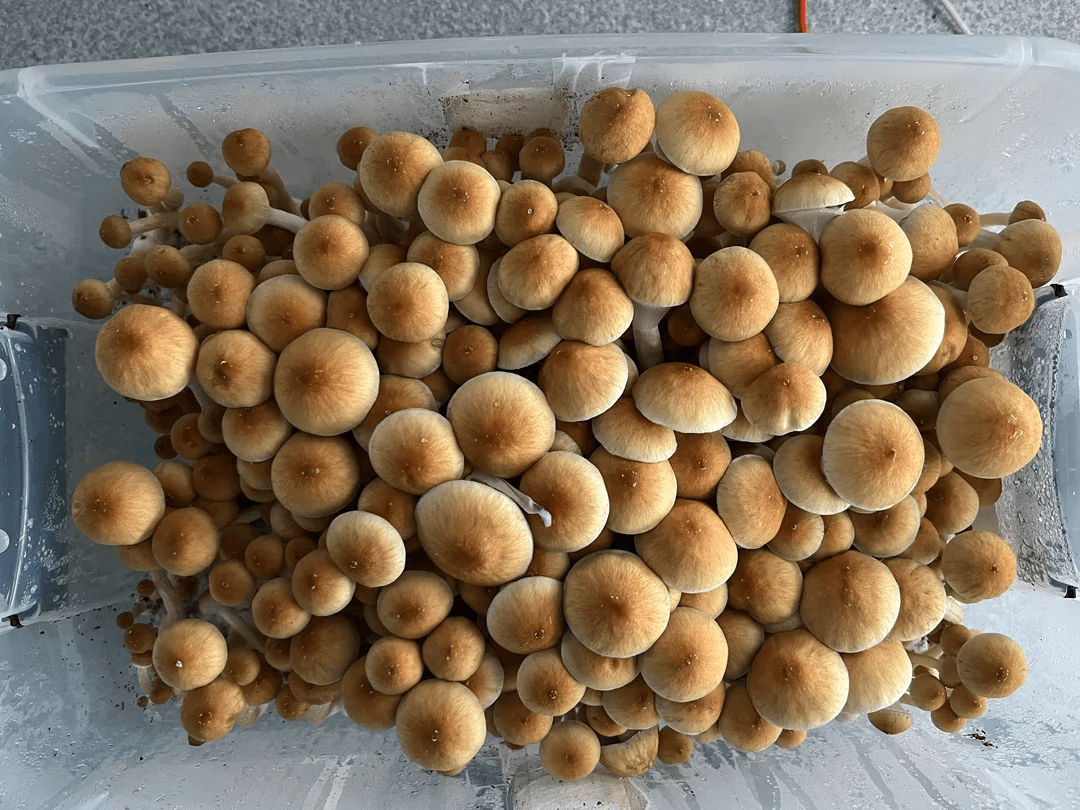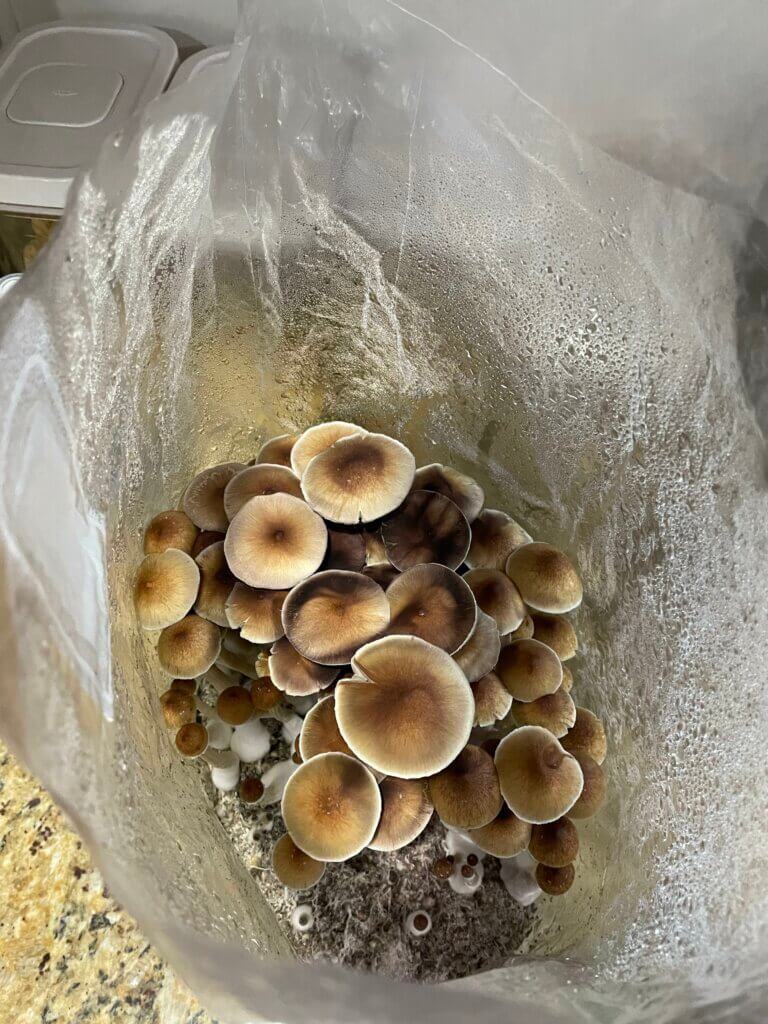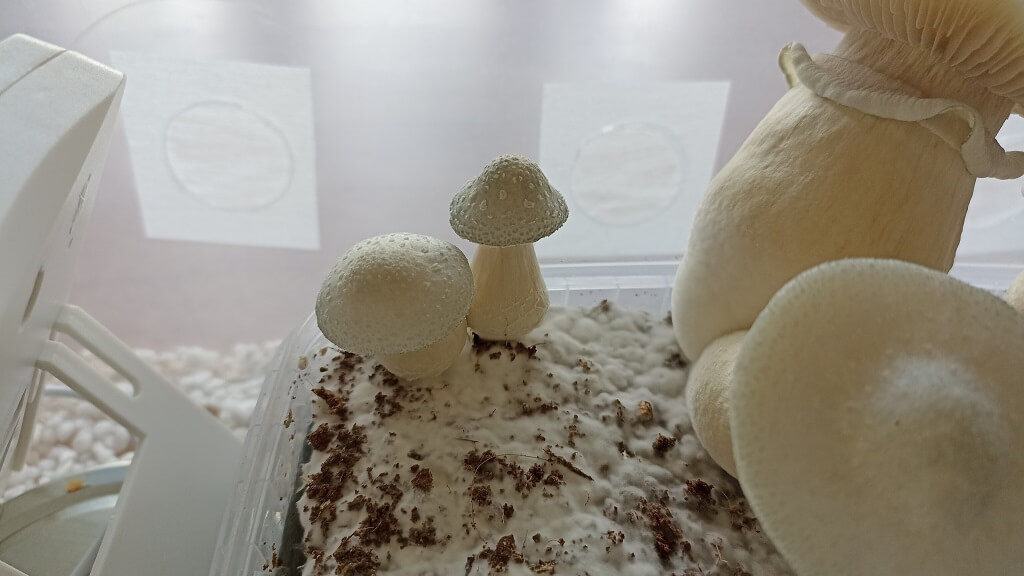Growing magic mushrooms at home has become an increasingly common practice, especially with the growing availability of information and mushroom kits that make the process much easier for beginners, who can skip such annoying and delicate steps as sterilization and inoculation. Although once the mycelium has grown, the mushrooms require relatively simple care, paying attention to the environmental conditions that ensure successful development is essential.
Among the most important factors that you must take into account are the temperature, humidity, and air exchange within the environment where the mushrooms grow, commonly called the fruiting space or chamber; well, these factors must be controlled in said chamber, which is where the fruiting bodies of the mushrooms will develop after the mycelium has colonized the substrate. Today we will tell you about several options you have to choose from as a fruiting chamber, as well as their main advantages and disadvantages.

Growing magic mushrooms at home
There are several options when it comes to designing or choosing a fruiting chamber, and as is often the case, each method has its own advantages and disadvantages. From the handy grow bags or mushbags, which are perfect for beginners and which you have probably seen or used, to plastic containers like the popular monotubs or the so-called shotgun fruiting chamber (SFC), which offer greater control and flexibility. There are also growers who opt for greenhouses with shelves, an option that allows for growing in large quantities but also carries more risks of contamination.
Today we’re going to explore each of these methods to help you decide which one is best suited to your level of experience, the space available, the amount of mushrooms you want to produce… and how much time and money you’re willing to put into setting them up!
Mushroom grow bags or mushbags
Using mushroom grow bags, or mushbags as they are commonly known, is one of the easiest and most popular ways to grow magic mushrooms, especially among beginners. These bags are designed to be a portable, sealed fruiting chamber, making them extremely convenient for those who do not have a dedicated growing space or who wish to reduce the risk of contamination to a minimum.
Mushbags usually come pre-filled with a substrate that is already sterilized and ready to be inoculated with magic mushroom spores . Once the mycelium has fully colonized the substrate inside the bag, it can be opened to allow air exchange and make way for the fruiting phase. These bags retain moisture and remain sealed for most of the process, greatly reducing the chances of contamination.
Another significant advantage of mushbags is their ease of use. No special equipment or advanced knowledge is needed to start using this system. However, it is essential to follow basic hygiene guidelines, such as disinfecting hands and surfaces with isopropyl alcohol before handling the bag, to avoid any type of external contamination. Additionally, they are an excellent option for those looking to grow discreetly, as they do not require much space or bulky equipment.
On many occasions, mushroom growing kits (mycelium already inoculated and ready to fruit inside a plastic container) are put to fruit inside this type of bag, simply by leaving the container open inside the sealed bag, which will be opened for a few minutes each day to encourage air renewal and spray a little water on the inside walls of the bag.

Plastic Containers: Monotubs and Shotgun Fruiting Chambers
Plastic containers offer a very effective alternative for mushroom growers looking for more control over fruiting conditions, especially if you decide to install some kind of measuring device such as a thermohygrometer, or climate control device such as a small humidifier inside your chamber. There are two particularly popular versions of these systems: the monotub and the shotgun fruiting chamber. Here are more about them:
Monotub: minimum care and great harvests
It is a plastic container with strategically placed holes along its walls to allow for proper air exchange, without compromising internal humidity conditions. These holes are often covered with micropore tape or polyester fleece, which helps keep out external contaminants while allowing CO₂ to escape and fresh air to enter. The monotub is known for being a low-maintenance method: once properly assembled and adjusted, it requires little human intervention, making it an ideal choice for growers who prefer a “set it and forget it” approach.
The monotub allows for passive control of the environment, meaning that as long as the humidity and ventilation levels are well-balanced from the start, you don’t need to open the lid on a daily basis. The ability to grow a larger volume of mushrooms in a single container is also a major draw for many growers. Typically, you cover the entire interior surface with a 3-4cm layer of substrate and mycelium, seal it, wait for the mycelium to fully colonize the substrate, and finally set it to fruiting. Still, many growers use these same monotubs as a fruiting chamber for their mushroom cake kits, the same ones we’ve told you are usually grown in mushbags.

Shotgun Fruiting Chamber: an alternative to the monotub
The shotgun fruiting chamber or SFC is another plastic container system but with more holes distributed along its walls, including at the top and bottom. In fact, that’s where the name comes from, as it looks like someone has shot the container several times with a shotgun. These small holes allow for greater ventilation compared to the monotub, which promotes better oxygenation, which is crucial for mushrooms to develop well-formed stems and caps. As with the monotub, the substrate is usually placed in trays or directly on the bottom of the container, although in this case the chamber is regularly humidified with a spray bottle to maintain humidity levels.
The main challenge with the shotgun fruiting chamber is the need for constant monitoring of humidity levels, as excessive ventilation can dry out the environment quickly, which would affect mushroom growth. However, when managed correctly, it is a system that allows for excellent development of fruiting bodies thanks to the constant flow of fresh air.
In addition, mini-greenhouses or plastic propagators like those used in conventional agriculture to root cuttings or start seeds are often used, even those that include a heating mat for the coldest months of the year. In any case, and before buying or building one of these containers, we recommend that you look carefully at the dimensions so that they fit in your space and are high enough for your mushrooms to be able to fruit properly and without restrictions.

Shelved greenhouses: maximum production, greater risk
Shelved greenhouses are an advanced option for growers looking to maximize their mushroom production, very common for edible mushroom growers, but not so much for magic mushroom growers. These small greenhouses, usually made from metal frames and lined with plastic, allow for multiple trays of mushrooms to be grown simultaneously on different levels. This setup makes the most of the vertical space, which is perfect for those looking to increase their production.
The shelving greenhouse functions similarly to other fruiting chambers in that it keeps humidity and ventilation levels controlled. However, due to its size and the number of internal surfaces, it is much more difficult to keep clean and sanitized compared to smaller, sealed systems such as mushbags or monotubs. This makes it a more contamination-prone option, especially if rigorous hygiene practices are not followed. Mold spores and bacteria can easily move between levels of the greenhouse, quickly contaminating the entire crop if not properly controlled.
To mitigate these risks, some growers use humidifiers and air filtration systems in their greenhouses, which help keep humidity and ventilation within controlled parameters. Still, it is essential to disinfect all surfaces regularly and handle each tray or container with clean gloves and tools to avoid introducing contaminants, as well as ensure maximum hygiene within the room where the greenhouse is located, without air currents or sudden fluctuations in temperature or humidity.

Conclusion: same principle, different options
You already know that growing magic mushrooms indoors requires precise control of environmental conditions, so choosing the right fruiting chamber will be key to achieving good results. Mushbags are an easy and safe option for beginners, as they provide a sealed environment that reduces the risk of contamination. Plastic containers, such as the monotub and shotgun fruiting chamber, offer more control over ventilation and humidity but require greater attention to managing conditions. Finally, we have seen how greenhouses with shelves allow for maximizing production, but their complexity makes them more prone to contamination and requires rigorous hygiene measures and greater dedication.
Each method has its advantages and challenges, but with the right equipment and careful handling, any grower can enjoy the successful fruiting of magic mushrooms at home. Your choice will depend on several factors, especially the quantity of mushrooms you want and the extent to which you want to control parameters such as gas exchange, temperature or humidity with external devices.
Happy harvest!
Source link
#fruiting #chambers #Alchimia #Grow #Shop